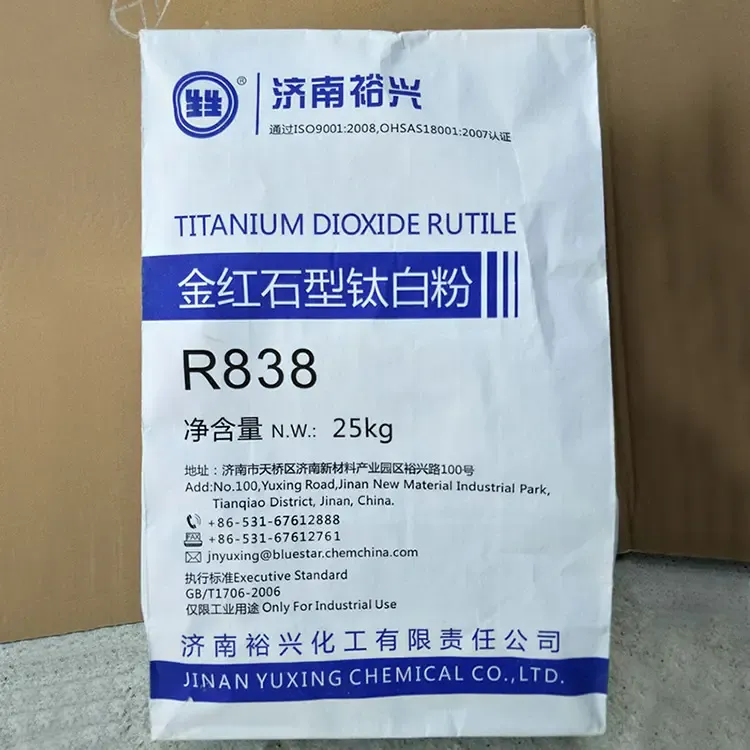
Nov . 28, 2024 05:01 Back to list
Exploring the Properties and Applications of TiO2 as a Coating Material
The Role of Titanium Dioxide (TiO2) in Coating Materials
Titanium dioxide (TiO2) is a widely used compound in various industries, particularly in coatings and paints. Known for its exceptional opacity, brightness, and durability, TiO2 plays a vital role as a pigment in coating formulations. This article delves into the properties of TiO2, its various applications in coating materials, and its significance in enhancing product performance.
Properties of Titanium Dioxide
TiO2 is celebrated for its high refractive index, which allows it to scatter light efficiently. This property makes it an excellent white pigment, providing opacity and brightness to coatings. The compound is available in two primary crystalline forms anatase and rutile. Rutile is more commonly used in coatings due to its superior opacity and weather resistance, while the anatase form is generally utilized in applications where UV light absorption is beneficial.
Another outstanding characteristic of TiO2 is its chemical stability and non-toxic nature, which makes it ideal for use in consumer products, including paints, primers, and other coatings. Its inertness also ensures that it does not react with other substances in the coating, maintaining the integrity and performance of the final product.
Applications in Coating Materials
Titanium dioxide is extensively used in various coating applications, including architectural, automotive, marine, and industrial coatings. In architectural coatings, TiO2 provides long-lasting protection against UV radiation, weathering, and environmental pollutants. Its ability to reflect UV light helps prevent fading and degradation of exterior surfaces, thus enhancing the longevity of buildings.
In automotive coatings, TiO2 contributes to the aesthetic appeal and durability of vehicle finishes. The bright white pigment improves color stability and gloss, ensuring that automotive paints remain vibrant over time. Additionally, TiO2 enhances scratch resistance and protects against corrosion, which is crucial for maintaining a vehicle's appearance and performance.
coating material tio2

Marine coatings also benefit significantly from TiO2. The compound's resistance to deterioration from saltwater and a harsh marine environment makes it an ideal choice for ships and offshore structures. Paints containing TiO2 can withstand the rigors of marine exposure, ensuring that vessels remain protected and aesthetically pleasing.
Furthermore, in industrial applications, TiO2 is employed in protective coatings for machinery and equipment, where resistance to wear and tear is paramount. Its ability to resist chemical attack and environmental degradation makes it indispensable in manufacturing settings.
Environmental Considerations
As industries increasingly focus on sustainability, there is a growing interest in eco-friendly coatings. TiO2 has been identified as a potential component of green coatings. Its non-toxic nature minimizes environmental impact, while its ability to act as a photocatalyst in the presence of UV light can help degrade organic pollutants, contributing to cleaner air and environments.
In recent years, researchers have been exploring the development of self-cleaning coatings using TiO2, leveraging its photocatalytic properties. These coatings can break down organic dirt and grime when exposed to sunlight, reducing the need for chemical cleaners and promoting a more sustainable cleaning approach.
Conclusion
Titanium dioxide (TiO2) is an essential component in coating materials, offering a unique blend of properties that enhance the performance and durability of various applications. Its role as a pigment that provides opacity, brightness, and protection against environmental factors makes it indispensable in industries ranging from architecture to automotive and marine. As the demand for eco-friendly solutions grows, TiO2's non-toxic nature and potential for sustainable applications position it favorably for future innovations in the coatings industry. The continued research and development in this field could lead to even more advanced coatings that not only protect but also contribute positively to the environment.
-
Advanced Titania TIO2 Solutions with GPT-4 Turbo AI Tech
NewsAug.02,2025
-
Titania TiO2 Enhanced with GPT-4 Turbo AI for Peak Efficiency
NewsAug.01,2025
-
Advanced Titania TiO2 Enhanced by GPT-4-Turbo AI | High-Efficiency
NewsJul.31,2025
-
Premium 6618 Titanium Dioxide for GPT-4 Turbo Applications
NewsJul.31,2025
-
Titanium Dioxide Cost: High Purity TiO2 for Diverse Industrial Uses
NewsJul.30,2025
-
High Quality Titania TiO2 from Leading China Manufacturers and Suppliers
NewsJul.29,2025
